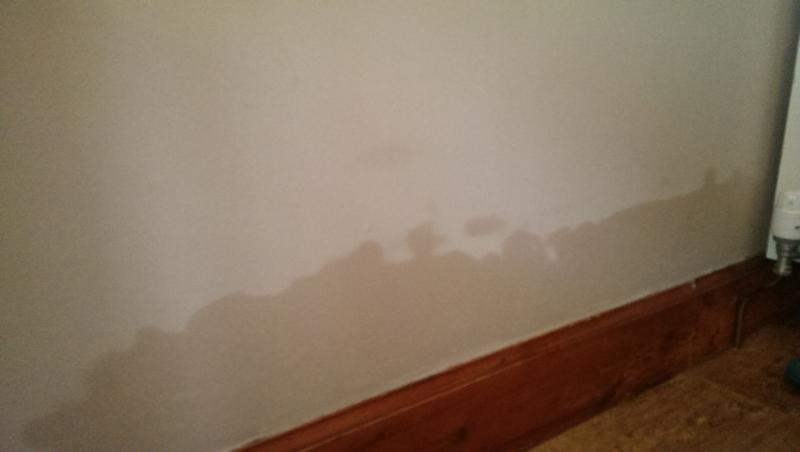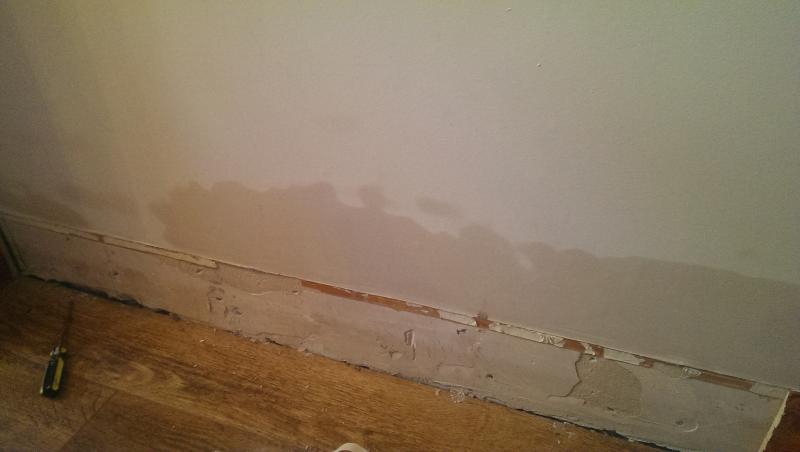Hi,
I was wandering if anyone could tell me there thoughts on this. As you can see in the picture there is a patch of dampness across the top of my skirting board in my hall way. The wall is a rendered sandstone wall and is has no external faces (ie internal wall).
The patch just seems to have come from nowhere. Which leaves me to suspect it is condensation.
The weather has been relatively damp of late and as the temperature is falling the heating is kicking back into life.
But, I am no professional and cannot be sure. So I would appreciate your thoughts, and if anyone knows a way to prove what type of dampness it is that would be great!
(On a side note, I have been in the house over 12years and never seen this before.)
Many Thanks



